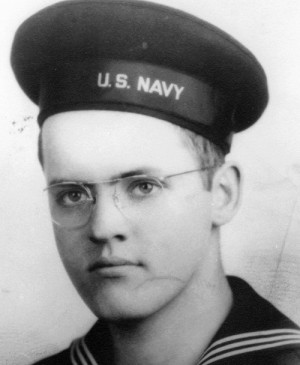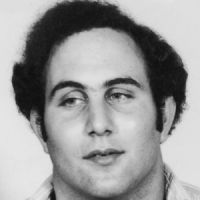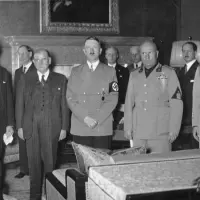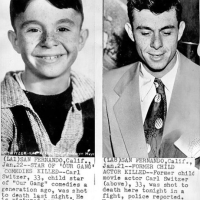During World War II, the U.S. 10th Army overcomes the last major pockets of Japanese resistance on Okinawa Island, ending one of the bloodiest battles of World War II. The same day, Japanese Lieutenant General Mitsuru Ushijima, the commander of Okinawa’s defense, committed suicide with a number of Japanese officers and troops rather than surrender.
On April 1, 1945, the 10th Army, under Lieutenant General Simon Bolivar Buckner, launched the invasion of Okinawa, a strategic Pacific island located midway between Japan and Formosa.

Men of the US 10th Army landing on Okinawa, Japan, 1 Apr 1945. Men of the US 10th Army landing on Okinawa, Japan, 1 Apr 1945
Possession of Okinawa would give the United States a base large enough for an invasion of the Japanese home islands. There were more than 100,000 Japanese defenders on the island, but most were deeply entrenched in the island’s densely forested interior. By the evening of April 1, 60,000 U.S. troops had come safely ashore. However, on April 4, Japanese land resistance stiffened, and at sea kamikaze pilots escalated their deadly suicide attacks on U.S. vessels.

A Kamikaze pilot flies into the aircraft carrier HMS Formidable during the battle of Okinawa in 1945. Waite Brooks’ battleship, the HMS King George V is on the horizon. This photo was taken by a friend of Mr Brooks, then Mid-Shipman, E.A. Wiggs while onboard the HMCS Uganda. Waite Brooks
During the next month, the battle raged on land and sea, with the Japanese troops and fliers making the Americans pay dearly for every strategic area of land and water won. On June 18, with U.S. victory imminent, General Buckner, the hero of Iwo Jima, was killed by Japanese artillery. Three days later, his 10th Army reached the southern coast of the island, and on June 22 Japanese resistance effectively came to an end.
The Japanese lost 120,000 troops in the defense of Okinawa, while the Americans suffered 12,500 dead and 35,000 wounded. Of the 36 Allied ships lost, most were destroyed by the 2,000 or so Japanese pilots who gave up their lives in kamikaze missions. With the capture of Okinawa, the Allies prepared for the invasion of Japan, a military operation predicted to be far bloodier than the 1944 Allied invasion of Western Europe. The plan called for invading the southern island of Kyushu in November 1945, and the main Japanese island of Honshu in March 1946. This was not to come to pass as in July, the United States successfully tested an atomic bomb and after dropping two of these devastating weapons on Hiroshima and Nagasaki in August, Japan surrendered.
I recently read a book, the Final Storm by Jeff Shaara. Although it is a novel, it is written with factual information and the actual important cast of characters from the Battle of Okinawa. I highly recommend this novel because it reads like a story while laying out a lot of facts. See the synopsis below.
With the war in Europe winding down in the spring of 1945, the United States turns its vast military resources toward a furious assault on the last great stepping-stone to Japan—the heavily fortified island of Okinawa. The three-month battle in the Pacific theater will feature some of the most vicious combat of the entire Second World War, as American troops confront an enemy that would rather be slaughtered than experience the shame of surrender. Meanwhile, stateside, a different kind of campaign is being waged in secret: the development of a weapon so powerful, not even the scientists who build it know just what they are about to unleash. Colonel Paul Tibbets, one of the finest bomber pilots in the U.S. Army Air Corps, is selected to lead the mission to drop the horrific new weapon on a Japanese city. As President Harry S Truman mulls his options and Japanese physician Okiro Hamishita cares for patients at a clinic near Hiroshima, citizens on the home front await the day of reckoning that everyone knows is coming.
My blog post a year ago today The GI Bill




 Check out my other blog
Check out my other blog I'M PUBLISHED
I'M PUBLISHED I'm Published Again
I'm Published Again









Reblogged this on Crash Course.
LikeLike
Again, great topic for this day and more information I did not know. Of course I knew about the battle but not some of the details and the pictures are great
LikeLike
I will get to this story again in my other blog but from the perspective of the Navy. Thanks for reading
LikeLike